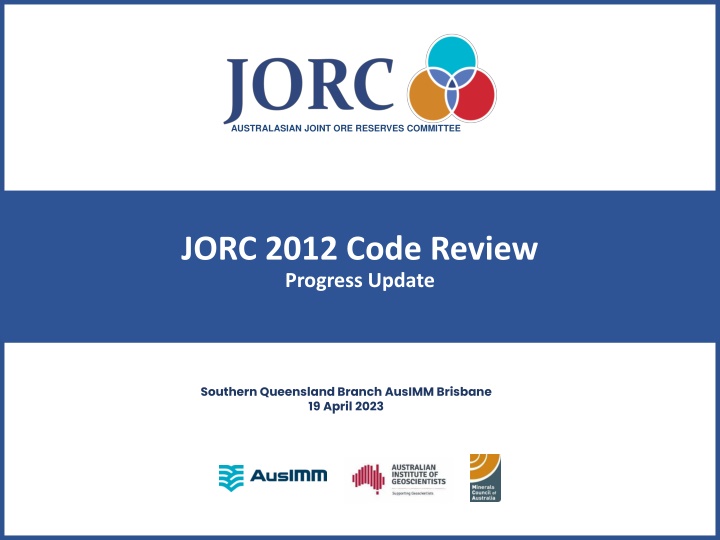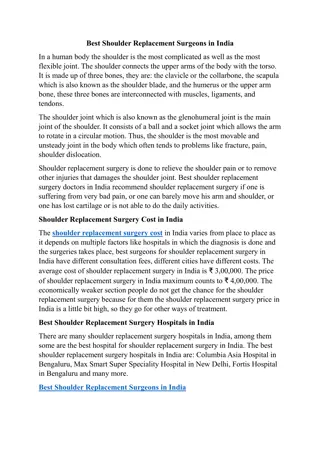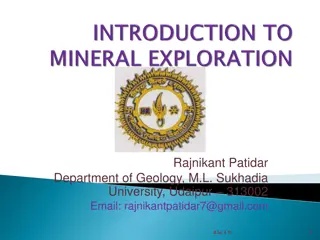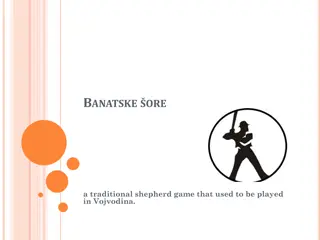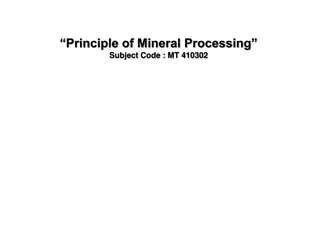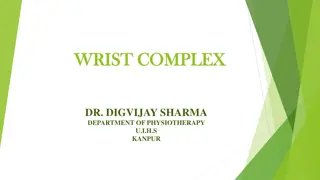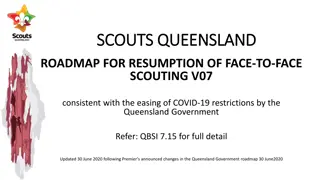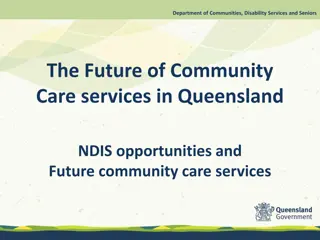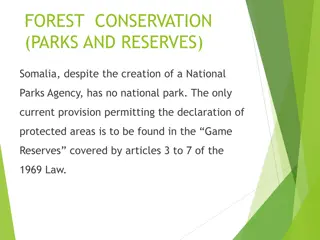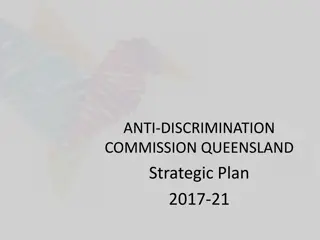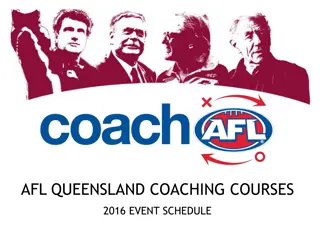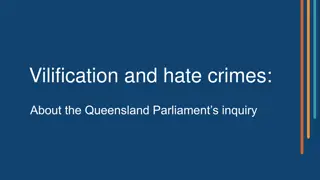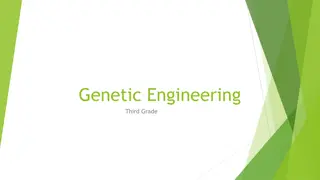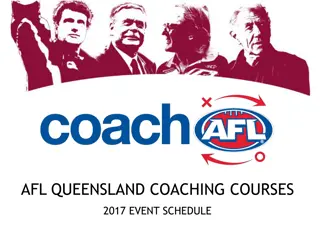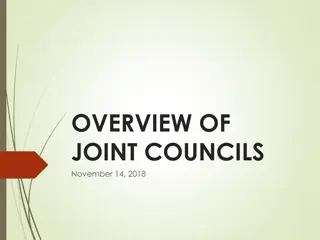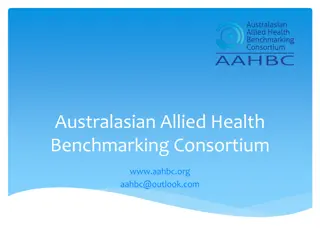Review of Australasian Joint Ore Reserves Committee (JORC) Code 2012 Progress in Southern Queensland
Australasian Joint Ore Reserves Committee (JORC) was established in 1971 and is sponsored by the mining industry and professional organizations. It works closely with CRIRSCO on mineral reserve reporting standards. JORC members include representatives from industry bodies and observers. The JORC Code sets standards for reporting exploration results, mineral resources, and ore reserves. A detailed review of the Code is underway to maintain professional standards.
Download Presentation

Please find below an Image/Link to download the presentation.
The content on the website is provided AS IS for your information and personal use only. It may not be sold, licensed, or shared on other websites without obtaining consent from the author.If you encounter any issues during the download, it is possible that the publisher has removed the file from their server.
You are allowed to download the files provided on this website for personal or commercial use, subject to the condition that they are used lawfully. All files are the property of their respective owners.
The content on the website is provided AS IS for your information and personal use only. It may not be sold, licensed, or shared on other websites without obtaining consent from the author.
E N D
Presentation Transcript
AUSTRALASIAN JOINT ORE RESERVES COMMITTEE JORC 2012 Code Review Progress Update Southern Queensland Branch AusIMM Brisbane 19 April 2023
AUSTRALASIAN JOINT ORE RESERVES COMMITTEE JORC was established in 1971 and is sponsored by the Australasian mining industry and its professional organisations. JORC is a member of and works closely with CRIRSCO, the Committee for Mineral Reserves International Reporting Standards. JORC comprises representatives of each of the three parent bodies: The Minerals Council of Australia (MCA) The Australasian Institute of Mining and Metallurgy (The AusIMM) The Australian Institute of Geoscientists (AIG) As well as representatives of the Australian Securities Exchange (ASX), the Financial Services Institute of Australasia (FinSIA) and the accounting profession, and an observer from the Association of Mining and Exploration Companies (AMEC). Parent Bodies Parent Bodies ASIC Technical Professional Consultant / Advisor ASX Investor / Potential Investor CRIRSCO Company Executive AusIMM FinSIA Non-executive directors JORC Mines Departments Public/Investor Relations Government Agencies Banking and Finance International Societies MCA Legal AIG Analysts AMEC Media NGO ESG Professional
AUSTRALASIAN JOINT ORE RESERVES COMMITTEE Affiliation/Representing Professional Background JORC Member MCA AusIMM AIG Geologist Geologist Geologist Steve Hunt, Chair Peter Stoker, Deputy Chair Graham Jeffress JORC Exec Jillian Terry MCA Geologist AIG Geologist Chris Cairns Andrew Hall AusIMM Engineer Tracie Burrows AIG Geologist Lynn Olssen AusIMM Geologist Dean David AusIMM Metallurgist Kevin Gleeson MCA Geologist Jared Broome MCA Geologist JORC Committee Adam Myers Accounting Profession Chartered Accountant James Rowe ASX Lawyer Chris Brown FinSIA Geologist / Economist Michael Slifirski FinSIA Mining Engineer/Metals & Mining Equity Analyst Vacant Accounting Profession - Neil van Drunen AMEC Economist Ann Ledwidge AIG Geologist MCA Economist Shane Evans Ex-officio members Rene Sterk AusIMM Geologist Rod Carlson AIG Geologist
THE JORC CODE The Australasian Code for Reporting of Exploration Results, Mineral Resources and Ore Reserves ('the JORC Code') is a professional code of practice that sets minimum standards for Public Reporting of Exploration Results, Mineral Resources and Ore Reserves. The JORC Code is produced by the Australasian Joint Ore Reserves Committee ('JORC'). JORC has resolved to undertake a detailed review of the Code provisions and procedures, to maintain professional standards and to satisfy the ongoing governance requirements of the ASX and ASIC. The JORC Code provides a mandatory system for the classification of Exploration Results, Mineral Resources and Ore Reserves according to the levels of confidence in geological knowledge and technical and economic considerations in Public Reports. Public reporting in accordance with the Code requires the formal signoff of a Competent Person, who is a mining professional meeting specific qualification, experience, and professional membership requirements. Public Reports prepared in accordance with the JORC Code are reports prepared for the purpose of informing investors or potential investors and their advisors.
THE REVIEW PROCESS 2020 2021 2022 2023 PRELIMINARY ENGAGEMENT AND IDENTIFICATION OF KEY ISSUES DRAFT UPDATED CODE, CONSULTATION AND APPROVALS TARGETED ENGAGEMENT AND WORKING GROUPS DRAFT OPTIONS AND REVIEW Draft options of changes to the Code, including: A draft interim updated JORC Code will has been prepared for review by ASX and ASIC. Followed by Parent Body and all stakeholder consultation and feedback. Stakeholder engagement and consultation activities have included general feedback provided directly and indirectly via emails, meetings, and online survey with submissions from individuals, industry bodies, companies, and organisations. A series of Working Groups (WG) were formed to review issues / opportunities raised from the online survey results, industry bodies and other organisational feedback - Options of proposed changes to current wording of the Code - Options for inclusion of proposed new sections or clauses to the Code A final draft Code will be prepared for approval by Parent Bodies, then ASX for recommendation to ASIC for Ministerial approval. Will be circulated to key stakeholders for review and feedback.
THE REVIEW PROCESS - ENGAGEMENT General Engagement ASIC and ASX Online Survey Summary of Key Issues Code Review Competent Person Review Joint Taskforce Parent Bodies / JORC Direct Working Groups JORC JORC Consultation Draft Options (JORC Code) including proposed changes to current wording and drafting of new sections of the Code ASIC and ASX review and feedback CRIRSCO consultation and feedback Pending Parent Body approval Draft Options (Competent Person) including proposed changes to relevant sections of the Code Draft Options (JORC Code) including proposed changes to current wording and drafting of new sections of the Code Draft Update JORC Code including all proposed changes, additions and options
STAKEHOLDER SURVEY The online survey was open to all stakeholders during December 2020 to April 2021. A total of >500 survey submissions were received with submissions from individuals, industry bodies, companies, and organisations. Primary Background Geoscientist 10% 4% Mining/ Geotechnical/Tailings Engineer 7% Company Executive 11% 50% Company Director Metallurgist / Processing Engineer 18% other Survey analytics conducted included response grouping and ranking by priority areas based on a combination of factors including number of respondents, detail of responses, similarity or opposition of opinion and potential future implications and considerations.
RESPONDENT EXPERIENCE The survey highlighted the extensive experience held by most respondents, with over 370 respondents (73%) having more than 20 years minerals industry experience, and comparably this group responded as having the most exposure to the Code. Minerals Industry Experience < 5 years 6 to 10 years 11 to 15 years 16 to 20 years > 20 years 0 50 100 150 200 250 300 350 400 Exposure to the Code < 5 years 6 to 10 years 11 to 15 years 16 to 20 years > 20 years 0 50 100 150 200 250
UNDERSTANDING OF THE CODE Survey response indicates that 71% of respondents felt the overall principles of the code were simple to understand, 25% were neutral on the topic and approximately 3% indicated they found understanding the Principles of the Code difficult. Overall understanding of the Code SIMPLE NEUTRAL DIFFICULT Understanding the Principles of the Code 80% 60% 40% 20% 0% Transparency Materiality Competence The majority of respondents indicated each principle was simple to understand, however approximately 9% indicated Materiality was difficult, and approximately 12% that the principle of Competence was difficult.
REASONS FOR USING THE CODE Respondents were asked to select all applicable reasons for using the code. Results demonstrate that the top three reasons for using the Code relate to preparation of Competent Person s reports, reporting of Mineral Resources and/or Ore Reserves and for preparing expert reports. This was followed by market related reasons, with 19% related to preparation and understanding of market releases and reports. Company annual and continuous disclosure returned 12% of responses. Preparing Competent Person's Reports Reporting of Mineral Resources and/or Ore Reserves Preparing expert reports Understanding releases and reports Preparing market releases Making company recommendations Company Disclosure - Annual Company Disclosure - Continuous Assessing compliance of market releases Making company investment decisions Making personal investment decisions Employee /Consultant Selection Other 0% 2% 4% 6% 8% 10% 12% 14% 16% 18%
CODES APPLIED Results show that approximately 34% of respondents have applied the Canadian Institute of Mining Metallurgy and Petroleum (CIM) National Instrument 43-101(NI 43-101). Approximately 17% respondents have applied the VALMIN code and approximately 10% have applied other codes, standards and guidelines based on the CRIRSCO template. CIM (NI 43-101), Canada VALMIN SAMREC, South Africa SEC, USA CRIRSCO PERC, Europe None KOMBERS-KCMI, Indonesia KAZREC, Kazakhstan OERN, Russia Other CCRR, Colombia Comision Minera, Chile CBBR, Brazil MPIGM, Mongolia UMREK, Turkey NACRI, India 0% 5% 10% 15% 20% 25% 30% 35% 40%
KEY AREAS FOR REVIEW The survey asked respondents to indicate which areas of the Code they would like to see greater clarity regarding. Mean results suggest respondents would like greater clarity concerning several areas including; The Reasonable Prospects of Eventual Economic Extraction test (RPEEE) Definition of a Competent Person Additional information on Environment, Social, Technology and Governance on Ore Reserves.
KEY AREAS REVIEWED WORKING GROUPS Competent Person Reasonable Prospects (RPEEE) Environmental, Social, Governance (ESG) Working Groups Reporting of Risks A series of Working Groups formed to address key issues identified. Reconciliation performance Each Working Group: Guidance notes provided input into the development of the JORC Code review. Use of JORC Code for non reporting purposes Provided thoughts, options, and assistance in the review of the Code, specifically around the key area. Relationship to ASX Listing Rules and/or to other codes Other Issues
COMPETENCE & COMPETENT PERSON AusIMM & AIG have formed a Joint Taskforce to review options for improving the requirements to act as a Competent Person Scope to move from self-nomination to a more robust process Competence verification and/or accreditation processes Working Groups Disciplinary process, enforceability and transparency Senior Competent Person and subsidiary technical specialist signoff model incorporated into code draft.
COMPETENT PERSON BASELINE STUDY Study Review Process JORC Baseline Study Peer review Baseline Study Draft Author compilation June- August Competent Person Working Group review Lead Author Recommendations Joint Taskforce review August Working Group Recommendations Parent Body Recommendations for change Joint Taskforce Public consultation Late 2022/23 JORC Code update Recommendations from the Baseline Study, essentially a factual background, related to definition of a Competent Person, Competent Person consent forms and potential membership requirements also considered
ESG JORC Working Group completed a review of 90+ available ESG references, guides, frameworks and developed a series of options for consideration New clause under review Integrated approach of ESG disclosure within Working Groups Table 1 reporting requirements Balanced reporting across all the modifying factors, including ESG Use of JORC Code for non reporting purposes Guidance matrix for practitioners Not inventing new ESG reporting systems
RISK: OPPORTUNITIES AND THREATS JORC Working Group formed to review options for greater visibility of opportunities and threats reporting within the Code: Requirement for the Competent Person to disclose material opportunities and threats for Exploration Targets, Mineral Resources and Ore Reserves Working Groups Use of JORC Code for non reporting purposes Options for a new table or section within Table 1 outlining disclosure criteria
RECONCILIATION It was recognised that the current Code was lacking in requirement to report reconciliation performance New clause recommended requiring disclosure of comparison of an estimate to a estimate, such as a Mineral Resource and/or an Ore Working Groups Reserve, or alternatively, the reconciliation of the mined part of an estimate to the mine production results Working Groups External guidance recommended to improve understanding and reporting in this area
JORC CODE GUIDANCE The JORC Survey and other stakeholder feedback highlighted need for greater guidance across several areas of the Code, options to consider include: Re-structuring of the code in a manner analogous to the ASX LR, GN and other supporting material Requirement to better define studies (including scoping studies), and alignment of terms Working Groups The need for Investor and practitioner tailored guidance with links to relevant ASIC, ASX guidance notes, FAQs, and other references Additional principles-based external guidance with worked examples and links to papers or references. Commodity guidance layers move external to code Use of JORC Code for non reporting purposes Potential adoption of CRIRSCO Template Table 1 and Table 2 format allowing guidance by project development stage: Exploration, Resource and Reserve
20 JORC would like to thank the volunteers for their time and expertise in the Code Review Working Groups Andre Badenhorst Geraldine McGuire Kirsty Sheerin Andrew Pocock Godknows NJowa Leslie M Watson Beau Nicholls Gregory MacDonald Marco Orunesu Preiata Bridget Alldridge Harald Muller Marcus Reston Bruce Harvey Heath Arvidson Mark Adams Bruce Sommerville Ian Glacken Mark Berry : Chris Davis Ian Ritchie Mark Murphy Clint Ward Ioannis Kapageridis Peter Fairfield Craig Morley Ivy Chen Rebecca Jackson Deborah Lord Jacinta Ireland Sam Ulrich Douglas Corley Jeremy Peters Selina Zoe Broun Dr Paul Weber John A. Rusnak Shauna Martin Emily Harris Jon Crosbie Tatum Woodroffe Gabrielle Kirk Jonathan Moore Timothy O'Sullivan Geoffrey Booth Jonathon Trewartha Todd McCracken
NEXT STEPS - STAKEHOLDER ENGAGEMENT 21 ASIC and ASX review of draft -underway CRIRSCO Parent Bodies (AusIMM, AIG, MCA) Working Group members (technical review) Industry Public
PROJECT PLAN PROGRESS JULY- DEC 2021 Q4 2021 JUNE 2021 2020 Draft JORC Code options and review Engagement and Online Survey Release of Summary of Key Issues and Work Plan Working Groups and targeted engagement Late 2023 Q2 2022 -Q2 2023 TBC TBC JORC 2023 Code release Draft updated JORC Code and review Approval Process Final Draft
STAY INFORMED Code Update Contact: Project Manager JORC Review jorc@ausimm.com.au http://www.jorc.org https://www.linkedin.com/company/ australasian-joint-ore-reserves- committee
